 When it was announced that Coil would play their first live show inNorth America on August 18, 2001, I was shocked by what seemed like anincredible series of synchronicities. I had long considered Coil to beone of my favorite bands, but I thought there would be little or nochance of ever seeing them play live. Though they had recently begunplaying select concerts at some classy venues and festivals in Europe,they just seemed far too shadowy, eccentric and English to ever graceAmerican shores. Strangely, the day announced for the concert was notonly my birthday, butmy 23rd birthday, a number commonly involved with synchronicity, and anumber often mythologized by Coil themselves. Also, before hearing theannouncement, I had already planned a trip to New York City tocelebrate my birthday. It seemed as if mysterious forces had aligned into make certain that I would not miss this Coil performance. However, Idid not have very high expectations for the concert itself. Sure, Coilwere mind-bending and transcendent on record, but how could theircomplex, studio-hermetic sound possibly translate into a meaningfullive show? Coil's liveperformance is a revelation; a powerful, dramatic explosion of dynamicenergy, every bit as impressive as their recorded output, but somehoweven more potent and overwhelming. The absolutely massive soundachieved by Sleazy's digital programming, Thighpaulsandra's soaringsynthesizers and Jhon Balance's possessed outbursts clearly neededproper documenting on record. Recently, Coil inaugurated abackwards-unfolding series of four live CDs, each documenting adifferent "age" of their constantly evolving live show. To thosewilling to shell out nearly $200, Threshold House also offered alimited box set of all four discs, together with two extra CD-Rs and"art objects" allegedly "loaded with magickal intent".
When it was announced that Coil would play their first live show inNorth America on August 18, 2001, I was shocked by what seemed like anincredible series of synchronicities. I had long considered Coil to beone of my favorite bands, but I thought there would be little or nochance of ever seeing them play live. Though they had recently begunplaying select concerts at some classy venues and festivals in Europe,they just seemed far too shadowy, eccentric and English to ever graceAmerican shores. Strangely, the day announced for the concert was notonly my birthday, butmy 23rd birthday, a number commonly involved with synchronicity, and anumber often mythologized by Coil themselves. Also, before hearing theannouncement, I had already planned a trip to New York City tocelebrate my birthday. It seemed as if mysterious forces had aligned into make certain that I would not miss this Coil performance. However, Idid not have very high expectations for the concert itself. Sure, Coilwere mind-bending and transcendent on record, but how could theircomplex, studio-hermetic sound possibly translate into a meaningfullive show? Coil's liveperformance is a revelation; a powerful, dramatic explosion of dynamicenergy, every bit as impressive as their recorded output, but somehoweven more potent and overwhelming. The absolutely massive soundachieved by Sleazy's digital programming, Thighpaulsandra's soaringsynthesizers and Jhon Balance's possessed outbursts clearly neededproper documenting on record. Recently, Coil inaugurated abackwards-unfolding series of four live CDs, each documenting adifferent "age" of their constantly evolving live show. To thosewilling to shell out nearly $200, Threshold House also offered alimited box set of all four discs, together with two extra CD-Rs and"art objects" allegedly "loaded with magickal intent". LIVE THREE
LIVE THREE
This documents a Spring 2002 show performed inBologna. It was an interesting period for Coil performances, asThighpaulsandra temporarily left the line-up to tour withSpiritualized. To make up for his noticeable absence, Peter and Johnenlisted Mike York and Cliff Stapleton to fill in with hurdy-gurdy andBreton pipes. This new, exotic instrumentation adds an unstable,organic element to the performance that works well with the setlistchosen for these shows. The disc opens with the ritualized workout of"Anarcadia: All Horned Animals." If you've heard The Remote ViewerEP, these ethnic-inflected drones will sound very familiar, notentirely dissimilar from Taj Mahal Travellers or The Magic Carpathiansat their most psychedelic. "Amethyst Deceivers" is here again, one offour slightly variant versions available in the box set. The classictrack "Slur" from Horse Rotorvator is given a faithful rendition, butBalance's voice is not quite equal to the job of singing this one, andMarc Almond's backing vocals are sorely missed. Balance dedicates "ACold Cell" to all the prisoners of the world, as well as those "inprisons of their own making." It's always been a haunting song, and thelive version enhances its lonely, melancholic atmosphere. Track six isan accomplished recreation of "Paranoid Inlay" from Musick To Play in the Dark 2,even though the tracklisting on the back of the digipack omits itcompletely. "Sick Mirrors (Version)" is a meditation on the concept ofremote viewing utilizing dense Middle Eastern melodies. The songseamlessly segues into a frighteningly intense version of "A.Y.O.R.,"the second of three songs in this set that may have been destined forCoil's long-promised-but-never-delivered Nothing Records album, nowreferred to as The World Ended a Long Time Ago. "Backwards"ends the set, a joyous psychosexual EBM bacchanalia, with Balanceuttering some of his most transgressive lyrics: "Fuck me inreverse/Normal is perverse/Everything's backwards." This disc would beperfect were it not for a rather nagging problem with the mixing, whichseems to favor Balance's vocals and pushes much of the music into amuddy, nebulous background. Even with the technical difficulties, Live Three is an essential chronicle of one of Coil's most inspired shows.
samples:
 LIVE TWO
LIVE TWO
Coil's Moscow performance in the Fall of 2001is documented here, soon after their brief stateside visit. Like theNYC show, the Moscow performance went under the banner "ConstantShallowness Leads to Evil," a tight, energetic performance highlightingCoil's most confrontational material. This is my personal favorite ofthe four periods of Coil's live shows, simply because Coil seemed atthis stage to be perfectly in control of their audience, skillfullyheightening tension and confounding expectations, all the whilesubliminally projecting their bizarre brand of personal empowermentpropaganda onto the unwitting observers. This Moscow performance seemsto be the absolute zenith of the "Constant Shallowness" show, which iswhy the bad mix on tracks like "What Kind of Animal Are You?" is verydisappointing indeed. The officially sanctioned bootleg CD-R recordingof the NYC show actually boasts superior audio, which is surprisingconsidering Coil's usually scrupulous attention to their productionfidelity. Still, this performance is very impressive, especially thepitch-perfect rendition of Horse Rotorvator's "Blood From the Air." Thefinal, apocalyptic blowout of "Constant Shallowness Leads toEvil" begins with Balance satirically answering some vicious rumorsprinted in a Russian publication: "We've heard that some of you mayhave read that we eat human flesh. However, we only do this onreligious holidays." Coil then launch into a lengthy noise assaultspecifically formulated to exorcise you of demons and brainwash you ofall your previous learning,leaving you vulnerable for Coil's subliminal psychobabble. "God pleasefuck my mind for good!" screams a wrecked Balance, stealing a line fromCaptain Beefheart's "Making Love to a Vampire With a Monkey on MyKnee." If you manage to make it to the end of this exhausting set withyour sanity intact, you may truly grasp Coil's final motto "Persistenceis All."
samples:
 LIVE ONE
LIVE ONE
The last in the live series is a 2-CD set beautifully packaged in afoldout digipack. The two discs document the first two Coilperformances of the new millennium, focusing on their Time Machinesmaterial. It must have been terribly exciting for the audience at theRoyal Festival Hall in April of 2000 to hear the opening tones of"Everything Keeps Dissolving," this being Coil's first true liveconcert other than some sallow, abortive attempts made in the early80's. Coil no doubt practiced for months, as they show no signs ofunease in unveiling their polished live presence. Disc one originallysaw limited release as Time Machines Live only available with mail order copies of Musick to Play in the Dark 2.It's swell for this material to be widely available, as it is truly agreat concert and a flawless recording. At this early stage in Coil'sperformances, John Balance had not yet adopted the dancing, screaming,extroverted lunatic personality he was to unveil in later shows.Therefore, the three tracks that make up the London show contain nolive singing, just a series of enraptured electronic oscillations thattwist around the brain, wiping out all thought but an extreme sense ofdislocation and confusion. "Queens of the Circulating Library" utilizessamples of Thighpaulsandra's opera-singing mum Dorothy Lewis, togetherwith digital arpeggiations and sexy purrs from a wounded synthesizer."Chasms" flirts close to Tangerine Dream territory, a swirlingcirculation of warm synthesizer tones that unfold like a Russianscience fiction film. Disc two comprises Coil's terrific performance atBarcelona's Sonar festival in June of 2000. It repeats the same songsfrom disc one, but adds three new songs to the setlist, including thefourth and final permutation of "Amethyst Deceivers." Bill Breeze playsviola throughout the entrancing set, adding some beautifulneo-classical flourishes. "TheUniverse is a Haunted House," a line taken directly from Burroughs' Naked Lunch, is present in a much more nascent version than the one heard on Live Four.Unfortunately, this disc suffers from two problems. First, the audiosource used for this release was not made from the soundboard, but israther a recording by a member of the audience. While pains have beentaken to clean up the sound, the audio does suffer from the technicalproblems inherent in bootleg recordings, including annoying audiencechatter and trebly distortions. Second, although the digipack lists sixtracks, the CD only contains five tracks, the last two apparentlyhaving been accidentally merged. Still, this is a rather impressivebootleg recording, and these problems can easily be forgiven and theconcert still enjoyed. We hear Jhon Balance step to the front for thefirst time, delivering a series of blood-curdling screams on "Elves,"once again making a play for the title of the most warped vocalist inmusic today.
samples:


 LIVE FOUR
LIVE FOUR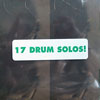 If "prog-esque overblown, overlong self-indulgent wankery" sounds like a bad thing or if comparison with Tales From Topographic Oceans carries un-cool implications then this CD may not be for you. I doubt that there remain many Brainwashed readers who still subscribe to the NME's Exclusion Principle, i.e. that to like The Fall you have to revile Yes, and it is to those thus enlightened readers that I'd recommend Just Drums.
If "prog-esque overblown, overlong self-indulgent wankery" sounds like a bad thing or if comparison with Tales From Topographic Oceans carries un-cool implications then this CD may not be for you. I doubt that there remain many Brainwashed readers who still subscribe to the NME's Exclusion Principle, i.e. that to like The Fall you have to revile Yes, and it is to those thus enlightened readers that I'd recommend Just Drums.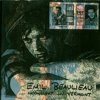 Forget every "rule" of noise, do away with any preconceptions concernedwith the genre, and prepare for something just a bit different. Thereare silences, sonic abberations, variations in pitch, timbre, andduration, and a wide palette of moans, groans, and explosions used allat once. Variety and intrigue is the name of the game on Moonlight In Vermontand Emil Beaulieau is chess master (if you will). Sure, there'spunishing, unrelenting, cascading, headache-inducing assaults to befound on this disc, but there's also dynamic elements. Most noise I'veheard ends up sounding like one mass of destruction hell-bent onchewing concrete. Beaulieau's noise is different because he is capableof using sonically opposite sounds together. It could still eatconcrete for breakfast, though. The first half is a nuclear melt-downaccompanied by random samples (like a flute), electric stabs of rhythm,and the sound of unholy wails. If this is what a moonlit Vermont soundslike, I'm staying the hell out unless I have a shotgun and a smallarmy. It's a truly scary summit that is reached before the fifth track(all of them are unnamed) acts as an oxygen tank and restores somesense of direction and balance. What sounds like a backwards guitarhums in the background whilst changing tones, punchy gasps of static,and roaring winds pour through the speakers. It makes getting submergedbeneath the final two tracks a bit easier. Beaulieau's recorded soundhas as much character as his live performances have but it's twistedand shaped in different ways. Sounds just don't start and stop; they'realive and full of nuance. The last I checked, Moonlight was only available on the tour but with some luck perhaps it'll show up at RRRecords, soon.
Forget every "rule" of noise, do away with any preconceptions concernedwith the genre, and prepare for something just a bit different. Thereare silences, sonic abberations, variations in pitch, timbre, andduration, and a wide palette of moans, groans, and explosions used allat once. Variety and intrigue is the name of the game on Moonlight In Vermontand Emil Beaulieau is chess master (if you will). Sure, there'spunishing, unrelenting, cascading, headache-inducing assaults to befound on this disc, but there's also dynamic elements. Most noise I'veheard ends up sounding like one mass of destruction hell-bent onchewing concrete. Beaulieau's noise is different because he is capableof using sonically opposite sounds together. It could still eatconcrete for breakfast, though. The first half is a nuclear melt-downaccompanied by random samples (like a flute), electric stabs of rhythm,and the sound of unholy wails. If this is what a moonlit Vermont soundslike, I'm staying the hell out unless I have a shotgun and a smallarmy. It's a truly scary summit that is reached before the fifth track(all of them are unnamed) acts as an oxygen tank and restores somesense of direction and balance. What sounds like a backwards guitarhums in the background whilst changing tones, punchy gasps of static,and roaring winds pour through the speakers. It makes getting submergedbeneath the final two tracks a bit easier. Beaulieau's recorded soundhas as much character as his live performances have but it's twistedand shaped in different ways. Sounds just don't start and stop; they'realive and full of nuance. The last I checked, Moonlight was only available on the tour but with some luck perhaps it'll show up at RRRecords, soon. 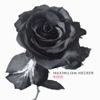 Think back to 2001 and try to remember Max Hecker's first album.Remember how it teetered dangerously on the borderline of campybrilliance and revolting sappiness? Unfortunately, for his secondfull-length album, Hecker has fallen over the line, completely onto theside of sappiness. Gone are the edgy guitar distortions, swirlingcalliope-esque melodies and brilliant acoustic guitar fingerpicking.What we're left with is a weak collection of soft-rock rejects withwimpy guitar solos, not even edgy enough to earn rotation in hotelelevators. Sure, Hecker's crybaby falsetto voice was never rugged tobegin with, but the music now is unchallenging and the words areoverrepetitious and almost completely brainless. On Infinite Love Songs,words like "Hide your cheeks with dirt / come and wear my shirt," werejust an example off the top of my head of the somewhat attractivelybizarre word choices, while hearing "Hold me now / heal my wounds," inthe song "I am Falling Now" here is a perfect example of a pitiful messof a man of whom I have absolutely no sympathy for. The closest thealbum gets to the glorious marriage of chaos and order is probably theblurry noise in "My Friends," but the noisy section is haphazardlysandwiched by a MOR film theme-ish piano and synth melody. "My Love ForYou Is Insane," however, is a completely new direction in garbage witha revolting generic drum 'n bass loop and more whiny lyrics. PerhapsI'm just a snotty, jaded critic, but hints, subtlety, and abstractsurrealism gain far more ground with me in a pop framework thanunchallenging, overtly simplistic narrative prose. I guess what itboils down to is that I'm more keen on Tim Buckley than ChristopherCross.
Think back to 2001 and try to remember Max Hecker's first album.Remember how it teetered dangerously on the borderline of campybrilliance and revolting sappiness? Unfortunately, for his secondfull-length album, Hecker has fallen over the line, completely onto theside of sappiness. Gone are the edgy guitar distortions, swirlingcalliope-esque melodies and brilliant acoustic guitar fingerpicking.What we're left with is a weak collection of soft-rock rejects withwimpy guitar solos, not even edgy enough to earn rotation in hotelelevators. Sure, Hecker's crybaby falsetto voice was never rugged tobegin with, but the music now is unchallenging and the words areoverrepetitious and almost completely brainless. On Infinite Love Songs,words like "Hide your cheeks with dirt / come and wear my shirt," werejust an example off the top of my head of the somewhat attractivelybizarre word choices, while hearing "Hold me now / heal my wounds," inthe song "I am Falling Now" here is a perfect example of a pitiful messof a man of whom I have absolutely no sympathy for. The closest thealbum gets to the glorious marriage of chaos and order is probably theblurry noise in "My Friends," but the noisy section is haphazardlysandwiched by a MOR film theme-ish piano and synth melody. "My Love ForYou Is Insane," however, is a completely new direction in garbage witha revolting generic drum 'n bass loop and more whiny lyrics. PerhapsI'm just a snotty, jaded critic, but hints, subtlety, and abstractsurrealism gain far more ground with me in a pop framework thanunchallenging, overtly simplistic narrative prose. I guess what itboils down to is that I'm more keen on Tim Buckley than ChristopherCross. Someone needs to tell the rock stars who like to listen to punk thatlistening to it does not qualify them to play or record it. The Finger,whose double album is only available on import but will soon beavailable on these shores, cannot record under their real names due tocontractual obligations. However, recent interviews and coy commentsmade by Ryan Adams and Jesse Malin reveal them as two of the cohorts inthis punk ensemble. So, to avoid problems with their respective recordlabels—who might not take kindly to their mild-mannered signings comingout with a blistering punk album—the members adopt "clever" pseudonyms,such as Jim Beahm, Warren Peace, and Rick O'Shea. The music inside isjust as trite as the names they came up with. Both albums total about35 minutes, and feature probably the most trite lyrics a punk recordhas ever had. On "Vendetta," vocalist Beahm shouts repeatedly "Vendettais my pleasure!" and on "Collar," he emotes "I give... you my leash...and I'll keep the collar!" Even though it seems impossible, it goesdownhill from there, like the latter 95 minutes of any Luke Perry film.Not that all punk had deep and meaningful lyrics; hell, most of themyou were lucky if you understood a word. On this recording, it justshows how painfully out of their element the contributors are. Everysong is about the punk lifestyle, not the regular socio-politicalstance or vital satire shown by the Sex Pistols or the Buzzcocks. Everysingle song falls flat, so thankfully they're all very short, with mostlasting a minute or less. A word to this lot: if you're going to ripoff a genre, even for fun with your buddies on a weekend, make it anearnest take, not some half-baked album about the atmosphere you thinkexists around it.
Someone needs to tell the rock stars who like to listen to punk thatlistening to it does not qualify them to play or record it. The Finger,whose double album is only available on import but will soon beavailable on these shores, cannot record under their real names due tocontractual obligations. However, recent interviews and coy commentsmade by Ryan Adams and Jesse Malin reveal them as two of the cohorts inthis punk ensemble. So, to avoid problems with their respective recordlabels—who might not take kindly to their mild-mannered signings comingout with a blistering punk album—the members adopt "clever" pseudonyms,such as Jim Beahm, Warren Peace, and Rick O'Shea. The music inside isjust as trite as the names they came up with. Both albums total about35 minutes, and feature probably the most trite lyrics a punk recordhas ever had. On "Vendetta," vocalist Beahm shouts repeatedly "Vendettais my pleasure!" and on "Collar," he emotes "I give... you my leash...and I'll keep the collar!" Even though it seems impossible, it goesdownhill from there, like the latter 95 minutes of any Luke Perry film.Not that all punk had deep and meaningful lyrics; hell, most of themyou were lucky if you understood a word. On this recording, it justshows how painfully out of their element the contributors are. Everysong is about the punk lifestyle, not the regular socio-politicalstance or vital satire shown by the Sex Pistols or the Buzzcocks. Everysingle song falls flat, so thankfully they're all very short, with mostlasting a minute or less. A word to this lot: if you're going to ripoff a genre, even for fun with your buddies on a weekend, make it anearnest take, not some half-baked album about the atmosphere you thinkexists around it.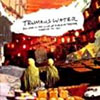 Over more than a decade of splurging fast guitar strumming and melodicsynchronised shouting, Trumans Water have proved themselves to be aforce for the ridiculous side of rock music. Yet again they crashmeteorites for troglodytes and yammer silly of the joys of resistance.Original guitarist Glen Galloway has rejoined mainstays the Branstetterbrothers Kirk and Kevin for recording and writing but doesn't tour withthem because he wants to stay home with his family. (Kevin now lives inParis.) Some of this album shows them at their most straight ahead anduncomplicated, kicking out the jams on tracks like the hotwired-heartopening salvo "Rock of Gibralter," "Some Things Feel Rough," and acover of the Flesheaters "Pony Dress" that'll have old fans bouncingaround and wondering how they lost track of the band. It seems to be acommon problem for them, mostly because almost every album comes out ona different label but it doesn't help that their website is a littleout of date. Maybe they were just too busy flooding the roads ofEurope. "Rock of Gibralter" is one of their catchiest tunes and unlikeNick Cave's unrelated MOR ballad of the same name it probably isn'tabout to get requested by servants of government. More likely it'llremind Thurston Moore not to sleepwalk to disconnection. "Say Hi to theLie Machine" is another fairly straight ahead rocker, propelled by drumclatter but pulled left by tunings that make people who work in guitarshops turn blue. The verse of "Airs Smudgy Blanket" even recalls "IFall" by The Damned, and Trumans Water manage to capture the spark ofsuch early punk bands but avoid cliche and retrogression by crankingthe weirdness levels and ditching corny rawk speak in favour of theirown tower of babbling tongue. This is the band that introduced ageneration of indie rock fans to Faust with their cover of "SadSkinhead," and the almost epic "When Diet and Exercise Fail" has asimilar momentum of magic roundabouts spinning absurdly out of control.Is that a theremin wailing above? They get out the sax to meander andobliterate a telephone recording of a woman ranting on the last track,but as speed flags here, interest wavers. There's certainly enough ofthe old Trumans Water magnetic energy to keep things moving and thisalbum is as good a starting point for the curious to step into theirtrip as any. There are still the more chaotic moments, like the openingof "Pulverizer Bear," which also ranks high in the celebratory dementedsynchronized shouting stakes. Dramatic lurching spells are neithercreated nor destroyed, but dangerous stunts for "Trapeze Sharks" arefun to hear. Trumans Water might be some kind of antidote for an ailingspirit, most represented by a stomach covered by airs smudgy blanketwhen diet and exercise have failed.
Over more than a decade of splurging fast guitar strumming and melodicsynchronised shouting, Trumans Water have proved themselves to be aforce for the ridiculous side of rock music. Yet again they crashmeteorites for troglodytes and yammer silly of the joys of resistance.Original guitarist Glen Galloway has rejoined mainstays the Branstetterbrothers Kirk and Kevin for recording and writing but doesn't tour withthem because he wants to stay home with his family. (Kevin now lives inParis.) Some of this album shows them at their most straight ahead anduncomplicated, kicking out the jams on tracks like the hotwired-heartopening salvo "Rock of Gibralter," "Some Things Feel Rough," and acover of the Flesheaters "Pony Dress" that'll have old fans bouncingaround and wondering how they lost track of the band. It seems to be acommon problem for them, mostly because almost every album comes out ona different label but it doesn't help that their website is a littleout of date. Maybe they were just too busy flooding the roads ofEurope. "Rock of Gibralter" is one of their catchiest tunes and unlikeNick Cave's unrelated MOR ballad of the same name it probably isn'tabout to get requested by servants of government. More likely it'llremind Thurston Moore not to sleepwalk to disconnection. "Say Hi to theLie Machine" is another fairly straight ahead rocker, propelled by drumclatter but pulled left by tunings that make people who work in guitarshops turn blue. The verse of "Airs Smudgy Blanket" even recalls "IFall" by The Damned, and Trumans Water manage to capture the spark ofsuch early punk bands but avoid cliche and retrogression by crankingthe weirdness levels and ditching corny rawk speak in favour of theirown tower of babbling tongue. This is the band that introduced ageneration of indie rock fans to Faust with their cover of "SadSkinhead," and the almost epic "When Diet and Exercise Fail" has asimilar momentum of magic roundabouts spinning absurdly out of control.Is that a theremin wailing above? They get out the sax to meander andobliterate a telephone recording of a woman ranting on the last track,but as speed flags here, interest wavers. There's certainly enough ofthe old Trumans Water magnetic energy to keep things moving and thisalbum is as good a starting point for the curious to step into theirtrip as any. There are still the more chaotic moments, like the openingof "Pulverizer Bear," which also ranks high in the celebratory dementedsynchronized shouting stakes. Dramatic lurching spells are neithercreated nor destroyed, but dangerous stunts for "Trapeze Sharks" arefun to hear. Trumans Water might be some kind of antidote for an ailingspirit, most represented by a stomach covered by airs smudgy blanketwhen diet and exercise have failed.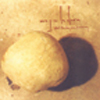 Maquiladora are the modern equivalent to The Band, recording slower,soulful rock music with an all-encompassing country influence. Theyswitch vocalists, vary between dense and sparse compositions, andthroughout each release, they plunge deeper and deeper headlong intoterritory that both soothes and expands the reaches of humanconsciousness. This music doesn't so much play through the speakers butswirl and mist out like a vaporous mist that the ears inhale. There areawkward moments like vocal stumbling and strained falsetto, but inlistening to the record as a whole they hardly matter. On Dreaming,they found quite a cast of characters to assist in their endeavors.From Blackheart Procession member Phil Jenkins, to a few of the AcidMothers Temple roster, the guests add interesting flourishes. With thecore members' strong songwriting, it makes for the most cohesive andexpansive record Maquiladora have mustered yet. "Sudden Life" opens therecord with an almost "Money for Nothing" approach: minimal sounds arejoined by tom drumming and, eventually, guitars and eerily treatedvocals. It's honestly enough to make me rise off the ground, soaringtowards the sky. As the album progresses, the lyrics paint a delicatepicture of loss, hope, and the world around us all. The trio of shamansthat are Maquiladora sound in tune with the elements, and it informsthe sounds their instruments and voices make. They describe themselvesas desert music, but on What the Day Was Dreaming, they provethat setting too barren for music as full of life as this. Dreams willbe haunted, and the day will be colored with shades of this music,making it a just little warmer and brighter.
Maquiladora are the modern equivalent to The Band, recording slower,soulful rock music with an all-encompassing country influence. Theyswitch vocalists, vary between dense and sparse compositions, andthroughout each release, they plunge deeper and deeper headlong intoterritory that both soothes and expands the reaches of humanconsciousness. This music doesn't so much play through the speakers butswirl and mist out like a vaporous mist that the ears inhale. There areawkward moments like vocal stumbling and strained falsetto, but inlistening to the record as a whole they hardly matter. On Dreaming,they found quite a cast of characters to assist in their endeavors.From Blackheart Procession member Phil Jenkins, to a few of the AcidMothers Temple roster, the guests add interesting flourishes. With thecore members' strong songwriting, it makes for the most cohesive andexpansive record Maquiladora have mustered yet. "Sudden Life" opens therecord with an almost "Money for Nothing" approach: minimal sounds arejoined by tom drumming and, eventually, guitars and eerily treatedvocals. It's honestly enough to make me rise off the ground, soaringtowards the sky. As the album progresses, the lyrics paint a delicatepicture of loss, hope, and the world around us all. The trio of shamansthat are Maquiladora sound in tune with the elements, and it informsthe sounds their instruments and voices make. They describe themselvesas desert music, but on What the Day Was Dreaming, they provethat setting too barren for music as full of life as this. Dreams willbe haunted, and the day will be colored with shades of this music,making it a just little warmer and brighter.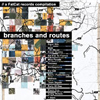 Fat Cat have compiled two discs that show them to be one of the mostdiverse and eclectic labels in the UK. I'd be surprised if you can'tfind at least a few tracks here to enjoy. The bait of a previouslyunreleased and fairly low key slice of Sigur Ros ambience opening thesecond disc is probably strategically placed to lure in their fans.Soon they'll be smacked about the ears by Xinlisupreme's anthemic synthsoaring "Murder License" which does distortion battle with Black Diceto see who can be the fattest cat. The Japanese duo win on brute force,but Black Dice know "Things Will Never Be the Same" for post-Boredomspsyche-stews after the "Murder License" has ben revoked. Mum's "GreenGrass of Tunnel" still retains its child like wonder and beauty afterso many plays and Party of One's bratty "Shotgun Funeral" is by fartheir best song and the only one I really need from them. Other albumexcerpts that ought to intrigue are the perky opener from David Grubbs'Rickets and Scurvy and one of the more concise and engaging tracks from Set Fire to Flames' low key desolate Telegraphs in Negative.Fennesz is always welcome round here and his "Badminton Girl" is awistful, exhausted summer evening memory fading, representing the FatCat split 12" series. Matmos, Duplo Remote, Kid 606 and Com.A also havea track each lifted from their splits, each shimmying on with fractureddancefloor moves. This does however beg the question of why they don'tcompile the split 12" singles onto CD albums once the singles are outof print. The label's weakest tendency is a penchant for middle roadquasi-avant pop and I could happily live without the sugar coatedtedium of Bjork and Funkstorung, the Emiliani Torrini remixes from TeamDoyobi and Process, and the gag-inducing Grain track. Mice Parade,Transient Waves, Him (misnomered as Seen) and the Dylan Group all coastby pleasantly making little impression. Giddy Motors stick out like ahammered thumb on the other hand, rockin' hard with the flipside of asingle that hasn't been on CD before. Almost everyone should find acouple of surprise tracks from someone they've never heard before thatimpresses. Stromba and Programme were the new finds for me. Strombatake a grooving Tortoise turn and Programme hit hard with a robustFrench rap meets Big Black drum machine onslaught. Sylvain Chauveau'shaunting piano isolation is a beautiful comedown to end the collection.
Fat Cat have compiled two discs that show them to be one of the mostdiverse and eclectic labels in the UK. I'd be surprised if you can'tfind at least a few tracks here to enjoy. The bait of a previouslyunreleased and fairly low key slice of Sigur Ros ambience opening thesecond disc is probably strategically placed to lure in their fans.Soon they'll be smacked about the ears by Xinlisupreme's anthemic synthsoaring "Murder License" which does distortion battle with Black Diceto see who can be the fattest cat. The Japanese duo win on brute force,but Black Dice know "Things Will Never Be the Same" for post-Boredomspsyche-stews after the "Murder License" has ben revoked. Mum's "GreenGrass of Tunnel" still retains its child like wonder and beauty afterso many plays and Party of One's bratty "Shotgun Funeral" is by fartheir best song and the only one I really need from them. Other albumexcerpts that ought to intrigue are the perky opener from David Grubbs'Rickets and Scurvy and one of the more concise and engaging tracks from Set Fire to Flames' low key desolate Telegraphs in Negative.Fennesz is always welcome round here and his "Badminton Girl" is awistful, exhausted summer evening memory fading, representing the FatCat split 12" series. Matmos, Duplo Remote, Kid 606 and Com.A also havea track each lifted from their splits, each shimmying on with fractureddancefloor moves. This does however beg the question of why they don'tcompile the split 12" singles onto CD albums once the singles are outof print. The label's weakest tendency is a penchant for middle roadquasi-avant pop and I could happily live without the sugar coatedtedium of Bjork and Funkstorung, the Emiliani Torrini remixes from TeamDoyobi and Process, and the gag-inducing Grain track. Mice Parade,Transient Waves, Him (misnomered as Seen) and the Dylan Group all coastby pleasantly making little impression. Giddy Motors stick out like ahammered thumb on the other hand, rockin' hard with the flipside of asingle that hasn't been on CD before. Almost everyone should find acouple of surprise tracks from someone they've never heard before thatimpresses. Stromba and Programme were the new finds for me. Strombatake a grooving Tortoise turn and Programme hit hard with a robustFrench rap meets Big Black drum machine onslaught. Sylvain Chauveau'shaunting piano isolation is a beautiful comedown to end the collection. Dual lives, fraud, Nice, satanic ritual, artistic theft, mightyWurlitzers and trade unions—this CD has got them all. The captivatingstory behind this reissue on CD of George Montalba's first two LPs istoo long and complex to get into here but is well documented in thesleeve notes for the curious. The background adds a certain aspect offun to this disk that is much like the Simpson's, that is, it can beenjoyed on several different levels. There's the 18's exoticainstrumental aspect with its pang of goofiness that I, for one, find isalways a plus. There's the material being played: stomping rhythms andstrong melodies that have you singing along in no time, mostlyarrangements of very familiar material from Saint-Saëns,Rimsky-Korsakov, Falla, Borodin, Tchaikovsky, Grieg and Sousa, to namea few. Much more than all that is Montalba's (actually his name was BobHunter) brilliant arrangements for organ and two percussionists. Hisplaying on the genuinely fabulous, mighty and majestic Wurlitzer pipeorgan is a delight and it's all captured expertly and lovingly in hi-fimono. The music is enormous in every way: dynamics, richness andvariety of tone color, opulent expansiveness and dazzling showmanshipin borderline bad-taste. It has an intensity (there's enough organtremolo here to supply half a dozen or more 50s horror flicks) thatwill make some cringe, others smile, and most weary if not taken inappropriate doses. My advice is to pause the CD at half-time, take anap, a shower and a cup of coffee (in that order), and then resume.Putting the smug perspective of hindsight aside, Bob Hunter's versionsof these tunes really are spectacular—his mastery of different styles,playful combinations of familiar and exotic, restraint and lack thereofadd up to some genuinely fascinating listening in the manner of, say,Quincy Jones. For a listening recommendation, perhaps what it comesdown to is how you enjoy cheese—if you like your cheese rich, funky,exotic, made with artesian perfectionism and well aged then GeorgesMontalba's Mighty Wurlitzer is what you crave.
Dual lives, fraud, Nice, satanic ritual, artistic theft, mightyWurlitzers and trade unions—this CD has got them all. The captivatingstory behind this reissue on CD of George Montalba's first two LPs istoo long and complex to get into here but is well documented in thesleeve notes for the curious. The background adds a certain aspect offun to this disk that is much like the Simpson's, that is, it can beenjoyed on several different levels. There's the 18's exoticainstrumental aspect with its pang of goofiness that I, for one, find isalways a plus. There's the material being played: stomping rhythms andstrong melodies that have you singing along in no time, mostlyarrangements of very familiar material from Saint-Saëns,Rimsky-Korsakov, Falla, Borodin, Tchaikovsky, Grieg and Sousa, to namea few. Much more than all that is Montalba's (actually his name was BobHunter) brilliant arrangements for organ and two percussionists. Hisplaying on the genuinely fabulous, mighty and majestic Wurlitzer pipeorgan is a delight and it's all captured expertly and lovingly in hi-fimono. The music is enormous in every way: dynamics, richness andvariety of tone color, opulent expansiveness and dazzling showmanshipin borderline bad-taste. It has an intensity (there's enough organtremolo here to supply half a dozen or more 50s horror flicks) thatwill make some cringe, others smile, and most weary if not taken inappropriate doses. My advice is to pause the CD at half-time, take anap, a shower and a cup of coffee (in that order), and then resume.Putting the smug perspective of hindsight aside, Bob Hunter's versionsof these tunes really are spectacular—his mastery of different styles,playful combinations of familiar and exotic, restraint and lack thereofadd up to some genuinely fascinating listening in the manner of, say,Quincy Jones. For a listening recommendation, perhaps what it comesdown to is how you enjoy cheese—if you like your cheese rich, funky,exotic, made with artesian perfectionism and well aged then GeorgesMontalba's Mighty Wurlitzer is what you crave.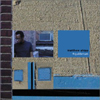 This entry in Thirsty Ear's ambitious Blue Series finds the series'headmaster stepping out once again to explore the realms of both thefamiliar and the unfamiliar. Shipp's reputation as a complex composerin avant and free jazz make him a prime choice to lead the Blue Seriesendeavor, and not content to simply orchestrate the undertaking, he hasseen fit to step up to the plate with his own solo and guest spots. On Equilibrium,he touches on traditional jazz structures as well as free-jazzexplorations, often augmented with accents of the urban and electronicmodern. "Vamp to Vibe" does just as it says, with Khan Jamal's vibestrickling over Shipp's vamping, seesaw chords with a confidence andfluidity that is astonishing. Jamal is given free reign to work hiswonders all over Equilibrium and his addition to Shipp'scoterie of distinguished and talented musicians is a masterstroke."Nebula Theory" is a free jazz excursion with the band members slowlydrifting apart, tenuously held together by strands of notes that breakand reform lending the track an amorphous quality that uses silence aseffectively as sound. "Cohesion," like "Vamp to Vibe," relies heavilyon a deep groove provided by Shipp's left hand and bassist WilliamParker. The ensemble digs deeply here, and the funky feel of the piecebenefits from the contributions of the programmed breakbeats ofelectronic producer FLAM. His additions are subtle, never seeking tosteal the spotlight from the ensemble, but they give the pieces adistinct energy, flirting with urban and club beats that breathe newsoul into the already lively jazz compositions. He and livepercussionist Gerald Cleaver work to act as a propulsive force, neverletting the potential for conflict or excess disappoint the potential.Shipp leaves his mark all over "The Root," with FLAM sitting out onthis more spacious piece. It is a virtuoso moment on Equilibriumwith Shipp conjuring a flowing melody from his piano that captures theattention, unbound yet never meandering. "The Key" bounces, lettingParker's bass, Jamal's vibes, and FLAM's synths and breaks all shineout, each of them seizing a portion of the piece and making them oozewith ingenuity and makes this a particular highlight on the disc. Thefinal track, "Nu Matrix," is another composition of sound and silence;patience and satisfaction. It stretches the ensembles interplay, eachcomponent loosely bonded and nearly independent. Equilibriumfinds strength throughout its duration, effectively trying its hand ata variety of sounds and ideas, and convincingly making them feelnatural together. The mix of traditional, free avant, modern, andexperimental fusion results in a remarkably compelling whole that won'tfrighten off new listeners, but rather draw them deeper into the idealsthat have come to comprise the Blue Series.
This entry in Thirsty Ear's ambitious Blue Series finds the series'headmaster stepping out once again to explore the realms of both thefamiliar and the unfamiliar. Shipp's reputation as a complex composerin avant and free jazz make him a prime choice to lead the Blue Seriesendeavor, and not content to simply orchestrate the undertaking, he hasseen fit to step up to the plate with his own solo and guest spots. On Equilibrium,he touches on traditional jazz structures as well as free-jazzexplorations, often augmented with accents of the urban and electronicmodern. "Vamp to Vibe" does just as it says, with Khan Jamal's vibestrickling over Shipp's vamping, seesaw chords with a confidence andfluidity that is astonishing. Jamal is given free reign to work hiswonders all over Equilibrium and his addition to Shipp'scoterie of distinguished and talented musicians is a masterstroke."Nebula Theory" is a free jazz excursion with the band members slowlydrifting apart, tenuously held together by strands of notes that breakand reform lending the track an amorphous quality that uses silence aseffectively as sound. "Cohesion," like "Vamp to Vibe," relies heavilyon a deep groove provided by Shipp's left hand and bassist WilliamParker. The ensemble digs deeply here, and the funky feel of the piecebenefits from the contributions of the programmed breakbeats ofelectronic producer FLAM. His additions are subtle, never seeking tosteal the spotlight from the ensemble, but they give the pieces adistinct energy, flirting with urban and club beats that breathe newsoul into the already lively jazz compositions. He and livepercussionist Gerald Cleaver work to act as a propulsive force, neverletting the potential for conflict or excess disappoint the potential.Shipp leaves his mark all over "The Root," with FLAM sitting out onthis more spacious piece. It is a virtuoso moment on Equilibriumwith Shipp conjuring a flowing melody from his piano that captures theattention, unbound yet never meandering. "The Key" bounces, lettingParker's bass, Jamal's vibes, and FLAM's synths and breaks all shineout, each of them seizing a portion of the piece and making them oozewith ingenuity and makes this a particular highlight on the disc. Thefinal track, "Nu Matrix," is another composition of sound and silence;patience and satisfaction. It stretches the ensembles interplay, eachcomponent loosely bonded and nearly independent. Equilibriumfinds strength throughout its duration, effectively trying its hand ata variety of sounds and ideas, and convincingly making them feelnatural together. The mix of traditional, free avant, modern, andexperimental fusion results in a remarkably compelling whole that won'tfrighten off new listeners, but rather draw them deeper into the idealsthat have come to comprise the Blue Series.
